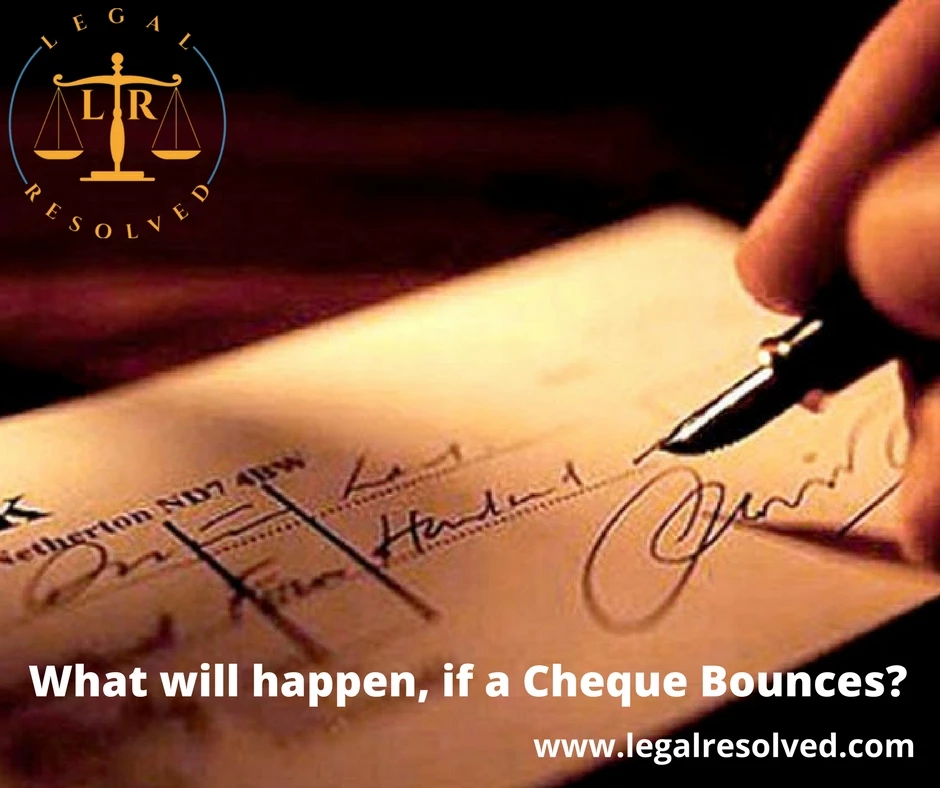
Partner Article
MEASURES TO CIRCUMVENT CHEQUE BOUNCE
Before, emerging of this digital era people used to transact with cheque because it is more trustworthy. However, the payee (or recipient of the check) doesn’t really know how much money the cheque writer has available for spending. And there are chances that cheque may get bounced because of many factors including insufficiency of funds, signature mismatch.
At present cheque bounce cases has increased a lot across India. In 2016, a study carried out on lawyers for bounced cheque in Bangalore reveals, an estimated 18 lakhs cheque bounce cases across the country, out of which about 38,000 are pending in Bangalore high court only. They suggested that people should know how to write a cheque or there are ways to avoid cases of cheque bounce.
The one suggestion given by a top cheque bounced lawyer in Bangalore to reduce the number of cheque bounce cases is settlement- if the accused is willing to deposit the amount with fine or interest. He also said, even if the complainant objects for settlement court shouldn’t listen to him, unless and until there is valid reason behind the objection. The one suggestion given by a top cheque bounced lawyer in Bangalore to reduce the number of cheque bounce cases is settlement- if the accused is willing to deposit the amount with fine or interest. He also said, even if the complainant objects for settlement court shouldn’t listen to him, unless and until there is valid reason behind the objection.
Both the drawer and drawee can also take steps to avoid bouncing of cheque:-
Steps to be taken by drawer:
- Availability of fund: Check the available balance in the account before issuing cheque (which might be different from your account balance). Use personal finance apps and text messages with your bank to understand when money leaves your account.
- Balance your account: Keep track of the account balance, deposits, and withdrawals. If the balance of your accounts is maintained properly, you’ll know what’s going on in your account before your bank does. You’ll have time to make deposits or transfer funds to avoid bouncing cheques and paying penalty fees.
- Communicate with payee: If you have issued a cheque and later realized that it’s going to bounce, contact the payee immediately. Let them know before they deposit the cheque and make other arrangements. This will save time and money for both the parties to cheque.
Steps to be taken by drawee:
- Verify funds: Contact the drawer’s bank to verify funds before accepting or depositing the cheque. Some banks will cooperate, but others will not provide any information about customer accounts.
- Processes: Be selective of the person from whom you are accepting cheque. For some businesses, the risk is worth it, and you can profitably serve more customers by taking cheque (as opposed to requiring credit cards or going cash only). Moreover, drawer should keep the following points in his mind while issuing the cheque:
-
Cancel the words ‘OR BEARER’ and Add ‘A/C Payee’ to the Top Left corner of the cheque: Cancelling the words ‘Or Bearer’ and adding ‘A/C Payee’ will make sure that no one apart from the person in whose favour the cheque is drawn can get the money. If the words ‘Or Bearer’ is not strike out, then it can be treated as a bearer cheque and any person holding the cheque can claim the money.
-
Do not leave any space before or in-between the name of the receiver. Do not leave blank space after the Name is written: Do not leave space between the word PAY and the Name of the Receiver or in between the name and surname. Doing this can give anyone a chance to add alphabets before or after the name and claim the money. Always strike out the space after writing the name and start as close as possible to the words ‘PAY’ and leave just bare minimum spacing in-between the names.
-
Always write ‘ONLY’, at the end of writing the amount in words in the ‘RUPEES’ column. Also put ‘/-’ in the rupees in number column. Do not leave space anywhere. Also, just like the name; do not leave space before writing the amounts in words as well as numbers and strike out the empty space left because amount can be altered easily by the fraudster. Divya Agarwal, a lawyer for bounced cheque in Bangalore said this is the common mistake people commit.
-
Do not sign on the MICR Band
-
Do not overwrite Always remember to not overwrite, scribble or cancel anything and then rewrite on a cheque. If mistakes happen try to rectify without scribbling, and if not possible, cancel the existing cheque and write a new one carefully.
This was posted in Bdaily's Members' News section by Legal Resolved .
Enjoy the read? Get Bdaily delivered.
Sign up to receive our popular morning National email for free.




 test article 123456789
test article 123456789
 hmcmh89cg45mh98-cg45hm89-
hmcmh89cg45mh98-cg45hm89-
 test456456456456456456
test456456456456456456
 test123123123123123123
test123123123123123123
 test xxxdiosphfjpodskhfiuodsh
test xxxdiosphfjpodskhfiuodsh
 Savour the flavour: North Tyneside Restaurant Week returns for 2024
Savour the flavour: North Tyneside Restaurant Week returns for 2024
 Six steps to finding the right buyer for your business
Six steps to finding the right buyer for your business
 Stephen signs off on a special night
Stephen signs off on a special night
 Life’s a Peachaus: Gillian Ridley Whittle
Life’s a Peachaus: Gillian Ridley Whittle
 Making a splash: Phil Groom
Making a splash: Phil Groom
 Making workplace wellbeing a priority
Making workplace wellbeing a priority
 A record of delivery, a promise of more: Ben Houchen
A record of delivery, a promise of more: Ben Houchen